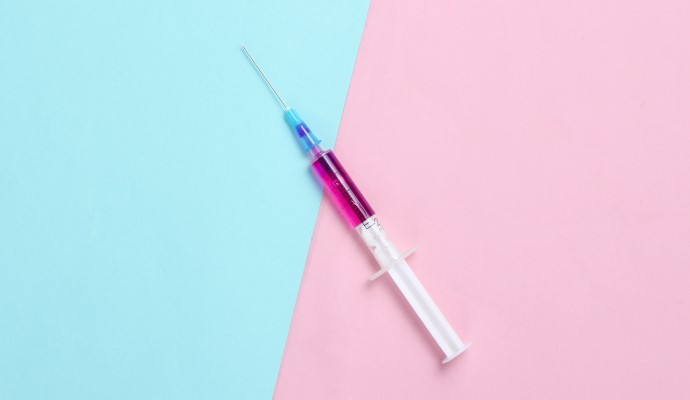COVID-19 Vaccination Requirements Boosted Uptake Among NYC Municipal Workers
The vaccination prevalence among NYC municipal workers increased from 485.5 to 834.9 per 1,000 employees across seven months after the city implemented COVID-19 vaccination requirements.

Source: Getty Images
- After the testing option was eliminated, COVID-19 vaccination requirements were linked to an increase in the vaccination rate among New York City municipal workers in 2021, according to a study published in Health Affairs.
Since the Food and Drug Administration (FDA) approved the COVID-19 vaccines for emergency use authorization, vaccination uptake has varied across geographic, racial, ethnic, and age groups.
New York City introduced a mandate requiring all 360,000 city employees to receive their first COVID-19 vaccine by September 13, 2021, or undergo weekly COVID-19 testing. The weekly testing option was eliminated on October 29, and the mayor announced that unvaccinated employees would face unpaid leave starting November 1.
Additionally, NYC municipal employees vaccinated between October 20 and October 29 at city-run sites received a $500 bonus, along with a $100 vaccination incentive offered citywide between July 30 and December 31, 2021.
Researchers used data from the NYC Citywide Immunization Registry from May 28 to December 30, 2021, to assess how the vaccination requirement impacted vaccine uptake among municipal employees. Researchers also looked at vaccination rates among all other NYC residents to compare uptake.
The sample of NYC municipal employees included 264,986 people per week, while the comparison group included 5 million city residents.
Between May 28 and July 11, known as phase 0, the weekly prevalence of COVID-19 vaccine series completion increased more slowly among municipal employees compared with other NYC residents, the study found. The vaccination prevalence among municipal workers went from 485.5 to 537 per 1,000 municipal workers (slope of 8.1), compared to an increase of 521.2 to 639 per 1,000 other NYC residents (slope of 18).
During phase 1, which lasted from July 23 to October 11, there was no significant difference between the two groups’ weekly prevalence of COVID-19 vaccines. Prevalence among employees went from 544.8 to 677 per 1,000, indicating a slope of 13, while prevalence among residents changed from 647.1 to 768.1 per 1,000 at a slope of 12.
Between the last phase, October 12 to December 30, the vaccination rate among municipal employees increased faster than among residents. Vaccination prevalence rose from 713.9 to 834.9 per 1,000 for municipal employees, at a slope of 12. Among residents, vaccination prevalence increased from 782.7 to 839.6 per 1,000, indicating a slope of 5.3.
Notably, this steeper incline among municipal employees occurred after the testing option was eliminated and the $500 incentive was introduced.
Vaccination rates also varied by race and ethnicity, the study found. For example, Black adults had the lowest vaccination prevalence among NYC municipal employees and residents at the start of the study period. During the study period, Black municipal employees (slope of 16) saw a greater increase in prevalence compared to White employees (slope of 9.6).
However, the vaccination prevalence for Black residents was lower than that for White residents, indicating that the vaccination requirement for municipal workers may have helped minimize racial disparities in vaccine uptake.
Among Black and White adults, the vaccination prevalence was higher among municipal workers than among NYC residents.
“The behavioral science specific to COVID-19 vaccines is emerging, but early data suggest that COVID-19 vaccination requirements can strengthen the intention to vaccinate in some hesitant adults, and our study supports that assertion,” researchers wrote.
The Biden Administration introduced COVID-19 vaccination mandates for healthcare workers in 2021. The interim final rule stated that eligible staff at healthcare facilities participating in Medicare and Medicaid must be vaccinated by January 4, 2022. The mandate received legal pushback and generated concerns from hospital leaders.
The Biden Administration also announced a vaccination requirement for nursing home staff. Data from the Kaiser Family Foundation (KFF) revealed that the vaccination rate among nursing home workers increased by 25 percentage points after the mandate was announced.
